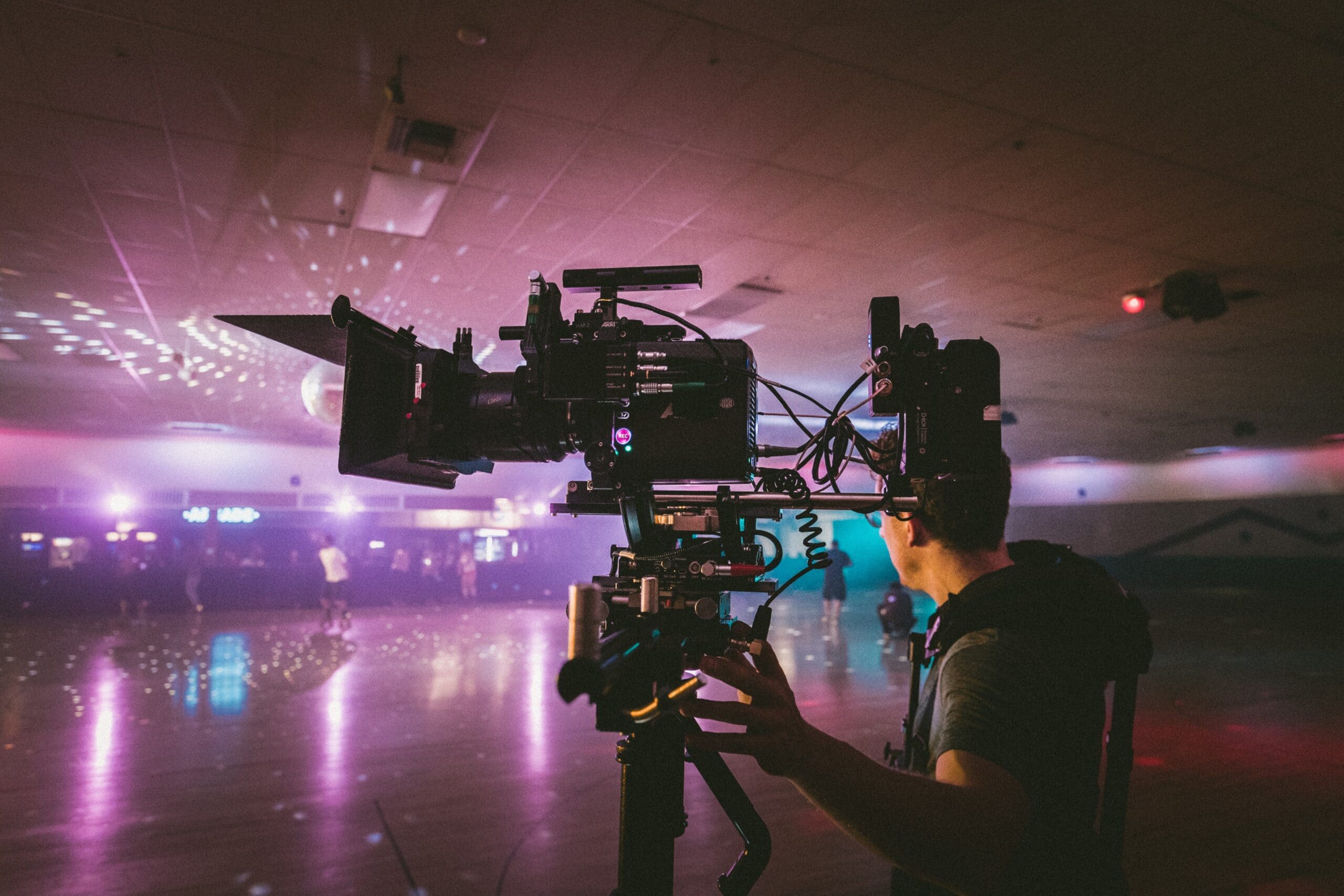Exploring the current Trends in Video Production for 2025
As we come close to 2025, the video production landscape is positioned for substantial development, identified by developments in enhanced truth and AI-driven editing and enhancing tools. The integration of interactive narration and immersive 360-degree experiences is redefining target market involvement, while lasting production methods acquire importance. Furthermore, improved online streaming capacities are set to democratize content access like never ever previously. These growths increase vital inquiries about the future of creative thinking and technology in video production-- what ramifications will these fads hold for consumers and developers alike?
Augmented Reality in Video Production
Increased truth (AR) is positioned to revolutionize video production by flawlessly blending electronic elements with live-action video. This ingenious innovation enhances storytelling by offering immersive experiences that involve viewers on a much deeper degree. AR permits filmmakers to incorporate interactive graphics, computer animations, and details overlays directly right into the real-world atmosphere recorded on display, producing a vibrant watching experience that standard techniques can not achieve.
In 2025, we can anticipate AR to become an integral part of numerous video production processes, from pre-production planning to post-production improvements. The capability to visualize intricate scenes and aspects in real-time will certainly allow supervisors and cinematographers to make educated choices throughout recording. Additionally, AR can promote remote partnership, allowing staff member to engage with 3D versions and visual impacts from various areas, therefore improving the production process.
Furthermore, marketing and marketing techniques will benefit from AR combination, as brands progressively leverage this technology to create interesting and one-of-a-kind content. As customer demand for innovative and interactive experiences remains to grow, AR will play an essential duty fit the future of video production, driving creativity and expanding the opportunities for filmmakers.
AI-Powered Modifying Devices

Enhanced Automation Features
The surge of AI-powered editing devices is set to transform the video production landscape, enhancing operations and improving creative opportunities. These enhanced automation functions are made to minimize manual work, permitting content developers to focus more on narration and imaginative vision. By leveraging artificial intelligence formulas, these tools can evaluate footage, determine crucial minutes, and recommend ideal cuts, greatly lowering editing and enhancing time.
One of one of the most amazing advancements is the capacity of AI to comprehend and adjust to various editing and enhancing styles. This capacity enables editors to apply details aesthetics or categories to their tasks effectively, assisting in a more personalized method. Furthermore, AI-driven color grading and sound modifying tools can immediately enhance visual and audio top quality, making certain a professional finish without comprehensive hands-on adjustments.
Additionally, the integration of automated features in video editing and enhancing software permits smooth integration with other production elements, such as adjustments and graphics, making the modifying procedure much more cohesive. As these devices remain to develop, they promise to democratize video production, making it possible for customers of all ability degrees to produce top quality web content quickly and properly, eventually changing the industry for years to find.
Real-Time Collaboration Perks
Real-time partnership is becoming increasingly essential in video production, particularly with the introduction of AI-powered modifying devices. These innovative modern technologies allow multiple stakeholders, including clients, directors, and editors, to interact seamlessly, regardless of their physical places. By facilitating instant comments and alterations, AI-powered systems enhance the innovative procedure, enabling groups to make choices rapidly and effectively.
Among the key advantages of real-time collaboration is the capability to leverage AI for data-driven insights. For instance, AI algorithms can assess video and recommend edits or shifts that line up with the job's vision, improving the workflow. This not just increases the modifying procedure however additionally ensures that creative options are informed by historical data and sector fads.
Additionally, real-time partnership promotes an extra comprehensive environment, urging varied point of views and concepts. Employee can add their know-how, enhancing the total top quality of the production. As video projects come to be progressively intricate, the need for cohesive team effort is vital, and AI-powered modifying tools are transforming how creative specialists collaborate. Ultimately, these improvements in real-time cooperation are poised to redefine the landscape of video production in 2025 and beyond.

Improved Interface
Cutting-edge individual interfaces in AI-powered editing tools are changing the video production landscape by boosting the individual experience and improving process. These tools leverage progressed algorithms to simplify complicated modifying jobs, permitting developers to focus extra on narration and creativity rather than technological complexities.
One crucial improvement is the assimilation of user-friendly drag-and-drop capabilities, which allow customers to construct their tasks perfectly. Combined with real-time comments systems, editors can envision changes promptly, minimizing the moment invested on modifications. In addition, AI-driven features such as automated scene discovery and intelligent color grading offer tips based upon task context, substantially increasing the editing and enhancing procedure.
Additionally, the surge of adjustable user interfaces allows customers to tailor their work area to fit private choices, improving efficiency and efficiency. Editors can focus on attributes and devices they use most frequently, minimizing distractions and making best use of process fluidity.
As these AI-powered editing tools proceed to evolve, their boosted interface are established to redefine market requirements, making high-quality video production obtainable to a more comprehensive variety of designers. This pattern not just democratizes video editing and enhancing but likewise promotes innovation in content creation, setting the phase for interesting advancements in 2025 and past.
Interactive Narration Strategies
As video production progresses, interactive narration methods are coming to be crucial for creating immersive audience experiences. By including branching narrative structures, creators can supply target markets a tailored trip via the material, enhancing interaction. In addition, real-time target market involvement allows for dynamic storytelling that adapts to customer options, cultivating a deeper connection with the material.
Immersive Audience Experiences
The evolution of immersive viewer experiences is changing the landscape of interactive narration methods, allowing audiences to engage with stories in unmatched means. By incorporating digital truth (VIRTUAL REALITY), boosted truth (AR), and combined reality (MR) modern technologies, designers are crafting environments where customers do not just observe stories however actively take part in them. This change in the direction of immersion promotes a feeling of visibility and emotional financial investment, transforming easy usage right into dynamic exploration.
Improvements in 360-degree video and spatial sound further improve these experiences, enabling users to browse and engage with their environments. Such technologies assist in a multi-sensory approach to storytelling, where aesthetic and acoustic aspects are delicately woven together to create a cohesive narrative. This not just captivates the audience yet also motivates much deeper links to the web content.
The rise of interactive systems is equipping creators to experiment with non-linear narratives, providing target markets the ability to influence outcomes and character arcs in genuine time. As immersive visitor experiences remain to advance, they are established to redefine just how stories are told and received, paving the means for cutting-edge kinds of content that reverberate with diverse audiences around the world.
Branching Narrative Frameworks
Building upon the immersive audience experiences that have transformed interactive storytelling, branching narrative frameworks are becoming an effective strategy to further engage audiences. These frameworks allow customers to influence the direction of the narrative, developing a much more individualized and vibrant experience. By providing numerous pathways and end results, material developers can accommodate diverse audience choices and foster much deeper psychological connections with the material.
As innovation breakthroughs, the execution of branching narratives has actually become much more sophisticated. Modern platforms allow smooth changes between choices, enhancing the customer's sense of agency. This interactivity not just mesmerizes target markets but likewise motivates duplicated watchings, as individuals check out alternating stories and ends.
Moreover, branching stories can be successfully integrated into different genres, from gaming to movie and educational web content. This convenience opens up new methods for narration, allowing developers to experiment with complex personality arcs and intricate plots. As we move into 2025, the importance of branching narrative structures in video production will likely continue to grow, improving how tales are told and experienced, eventually redefining the partnership in between makers and their audiences.
Real-Time Target Market Involvement
Real-time target market engagement is revolutionizing interactive narration by allowing developers to link with audiences in extraordinary means. This innovative method permits audiences to affect stories as they unfold, boosting immersion and emotional financial investment. With innovations in technology, such as online polling, conversation integration, and boosted truth, customers can participate proactively, choosing that form the direction of the story in real-time.
Systems leveraging these methods are not only redefining standard narration but additionally fostering area interaction. By integrating features like online Q&A sessions and interactive character dialogues, developers can create much deeper links with their audience, making sure an extra personalized viewing experience. Therefore, narratives end up being more dynamic, adapting to target market responses and choices immediately.
Furthermore, real-time engagement enhances information collection, supplying beneficial insights into visitor behavior and choices. This information can guide future manufacturings, refining web content techniques to much better reverberate with target demographics. As we come close to 2025, the assimilation of real-time target market engagement right into video production will likely come to be a conventional method, changing how tales are informed and experienced. The development of interactive storytelling is not merely an enhancement; it is a crucial shift in the direction of a more engaging and participatory narrative framework.
360-Degree Video Knowledge
Immersive video experiences are readied to redefine content consumption in 2025, as developments in innovation remain to obscure the lines between truth and online involvement. The rise of 360-degree video and augmented reality (AR) is changing how target markets communicate with content, developing opportunities for deeper emotional connections and tailored narration.
With the proliferation of budget-friendly virtual reality headsets and smart phones with the ability of supporting top notch immersive content, creators can now create videos that place customers at the center of the activity. This change not only improves viewer engagement yet additionally allows brands to develop one-of-a-kind experiences that resonate with their target audiences. Video Production. For circumstances, traveling companies can provide virtual tours of destinations, while instructional institutions can simulate intricate settings for immersive knowing
The combination of interactive components in 360-degree videos allows viewers to make selections that influence the story, promoting a sense of company and financial investment in the content. As makers experiment with these innovations, we can anticipate a rise in cutting-edge storytelling techniques that prioritize target market involvement. In this progressing landscape, the difficulty will be to balance creative vision with the technical demands of creating top quality immersive experiences.
Lasting Production Practices
As the video production landscape progresses with ingenious modern technologies like 360-degree experiences, the industry is also increasingly prioritizing lasting production techniques. Identifying the ecological effect of standard recording techniques, production firms are adopting green efforts to minimize their carbon impact.
One significant fad is making use of renewable resource resources, such as solar and wind power, to fuel production collections. This shift not only lowers reliance on fossil fuels but also reduces operational prices over time. In addition, several companies are executing digital processes to limit paper use, thereby promoting a much more lasting workflow.

Cooperation with regional communities and businesses also plays an essential function in sustainable methods, as it minimizes and advertises regional economic situations transportation discharges. In general, the dedication to sustainability in video production shows a broader societal change towards ecological stewardship, ensuring that future generations can proceed to delight in motion picture storytelling without compromising the world's wellness.
Improved Online Streaming
The future of video production is being improved by improved real-time streaming capabilities, which are transforming exactly how audiences engage with web content. As innovation breakthroughs, live streaming is ending up being a lot more accessible and interactive, enabling designers to attach with viewers in real-time. This change not just enhances target market engagement however likewise fosters a feeling of neighborhood around shared experiences.
With the combination of high-definition video and audio top quality, combined with low-latency streaming, audiences now enjoy smooth broadcasts that rival traditional tv. Platforms are increasingly including functions such as multi-camera setups, interactive surveys, and audience Q&A sessions, making live occasions much more engaging and vibrant.
The increase of decentralized streaming protocols ensures far better dependability and scalability, enabling material developers to get to larger target markets without endangering high quality - Video Production NYC. As influencers and brands profit from these improvements, the potential for cutting-edge advertising and marketing strategies via online streaming emerges
In 2025, we can anticipate more developments in increased fact overlays and improved analytics, empowering designers to refine their material and customize it to target market preferences. Improved real-time streaming is not just a pattern; it is a crucial element forming the future of content usage and production.
Digital Reality Combination
With boosted live streaming establishing the phase for even more interactive experiences, online truth (VR) combination is poised to take audience engagement to unprecedented levels. As we approach 2025, the merging of virtual reality technology with video production is transforming how content is developed and consumed. By engaging customers in a 360-degree atmosphere, producers can provide one-of-a-kind experiences that traditional formats can not match.
Brands are progressively leveraging VR to create engaging narratives that reverberate deeply with audiences. This combination permits experiential advertising and marketing, where consumers can communicate with items or solutions in an online space, cultivating a more individual link. Events such as digital concerts, item launches, and immersive storytelling sessions are coming to be commonplace, engaging customers in manner ins which enhance retention and psychological financial investment.
Innovations in equipment and software application are making VR a lot more available to developers, resulting in a more comprehensive variety of material. As production expenses lower and easy to use devices arise, we can anticipate a surge in ingenious virtual reality projects across numerous sectors, from enjoyment to education and learning. The future of video production lies in these immersive experiences, redefining storytelling and audience interaction in the digital landscape.
Regularly Asked Questions
What Are the Necessary Abilities for Video Producers in 2025?
Essential skills for video producers in 2025 include innovative technical proficiency in modifying software program, solid storytelling abilities, versatility to arising technologies, partnership skills for diverse groups, and an eager understanding of audience involvement techniques across platforms.
Exactly How Can Independent Creators Access Advanced Video Production Technologies?
Independent makers can access innovative video production modern technologies via economical software application platforms, cloud-based editing devices, open-source sources, and on-line training courses. Cooperations with technology companies and leveraging community resources additionally boost access to cutting-edge production devices.
What Are the Potential Prices Related To These New Video Production Trends?
The possible costs associated with arising video production patterns can vary greatly, encompassing expenditures for sophisticated devices, software application licenses, training, and personnel. Budgeting effectively is crucial for makers to leverage these technologies without spending beyond your means.
Exactly How Can I Determine the Success of My Video Production Efforts?
To gauge the success of your video production efforts, examine key efficiency indicators such as audience involvement, conversion rates, target market retention, and responses. Utilize analytics tools to collect information and derive actionable insights for future renovations.
What Industries Are Most Affected by Video Production Trends in 2025?
Industries such as advertising and marketing, healthcare, home entertainment, and education are greatly impacted by emerging video production trends. Video Production. These sectors increasingly utilize ingenious methods to improve involvement, improve communication, and provide engaging web content to their particular target markets
Innovative user interfaces in AI-powered editing and enhancing devices are transforming the video production landscape by improving the individual experience and enhancing operations. As we approach 2025, the integration of real-time audience involvement into video production will likely become a common method, transforming just how tales are told and experienced. As the video production landscape advances with cutting-edge modern technologies like 360-degree experiences, the market is likewise increasingly focusing on sustainable production practices. The future of video production is being improved by enhanced real-time streaming abilities, which are transforming how target markets engage with web content. To measure the success of your video production initiatives, evaluate vital performance indications such as customer engagement, conversion prices, audience retention, and responses.